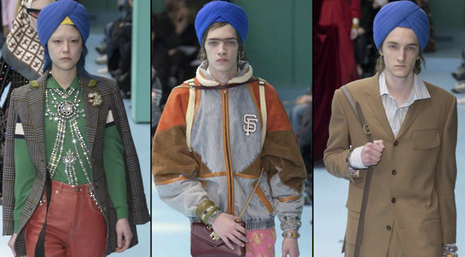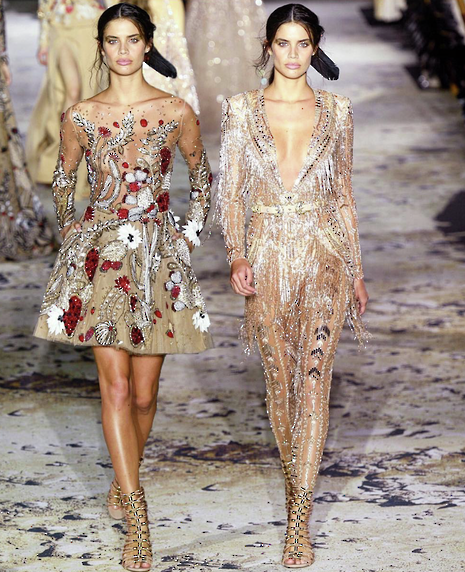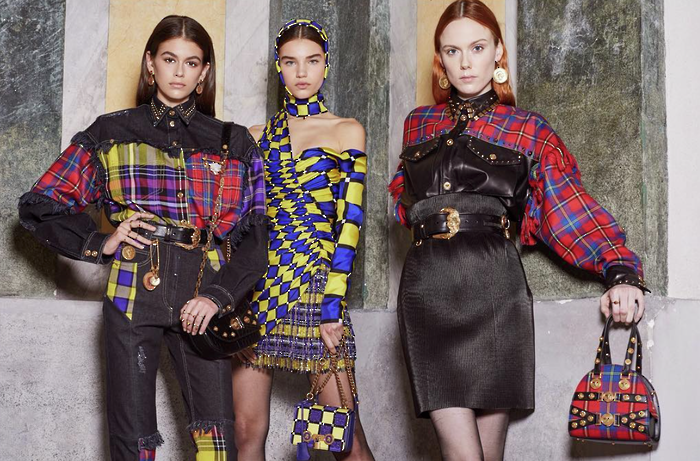Cultural appropriation is a trend that needs to end
Following their controversial use of Sikh turbans in their Milan show, Chandan Dhiman argues Gucci’s misuse of cultural symbols reflects the deeper inequalities within the industry

As part of the CRAASH Impact Lectures, Sara Ahmed delivered a lecture discussing the ‘uses of use’. This project attempts to place a focus on ‘use’ as an activity, as an action which brings things into existence. A cup only comes into existence once its use as a vessel is used by the many.
Ahmed suggests that ‘uses of use’ implies restriction; how absurd would it be to use a fork to drink soup? Or use a plate to drink water?
Since use comes with restriction, use is a way in which to maintain or disrupt social boundaries – employing the use of an item to make claims for identity. Using the action of ‘use’ with an intended function.
Ahmed continues to expand this notion of use by discussing how easy it is for things to come into use for some, compared to others. If a garment fits, it is easy to use and bears no marks of struggle. If a garment is ill-fitted, the garment will become worn and damaged – it becomes something that is used. Like a second-hand garment, the frayed threads, the faded colour and the tough stains express ‘use.’ Such use can be treated as a testimony, as Ahmed says: ‘use leaves traces in places.’

What does all this discussion of ‘use’ have to do with Gucci’s Fall Collection at the Milan Fashion Show last week? Why has the collection aroused so much backlash from the Sikh community after White models were sent down the runway adorned with traditional Sikh turbans? Ahmed’s exploration of ‘use’ fits well in exploring the political significance of this action.
The turban is intertwined with Sikhism’s historical foundation as a religion. As Ahluwalia writes, ‘the turban is an article of clothing that fellow Sikhs fought for the right to wear in their daily lives, and still do to this day.’
Yo.. @gucci ... I mess with you guys... but this isn't a good look for you... could you not find a brown model? pic.twitter.com/INqxwrfB0t
- Avan Jogia (@AvanJogia) February 22, 2018
Much like the second-hand garment, the turban is marked with testimony: the experience of faith, the experience of ridicule in Western society, the experience of fear in post-9/11 America, the experience of pride in using the turban as way in which to assert religious identity. The use of the turban to bring oneself into existence as a Sikh. To use the turban as a testimony to carry with you at all times.
And so, it is highly offensive that Gucci is so easily able to claim the ‘use’ of the turban as a quirky trend to put down the runway. It is the garment that fits with ease.
And this is the issue: for the many who marvelled at the collection, the use of the turban as a religious item falls into the periphery – the experiences, the testimony and identity embedded in the pleats of a turban are lost.
It is worrying that even the fashion industry is unaware of its ability to reuse, misuse and disuse the cultural markers of the same social groups it has historically sought to exclude.
The use of white bodies to adorn the turban renders the brown body as invisible – as a body that is not worth using.
This is not simply a case of cultural appropriation, or cultural insensitivity; it speaks to a much larger issue of how the forces of the West are able to determine the use of bodies and the use of items. How such forces can put ideas, people and histories in and out of use when necessary.
For Gucci, the turban was a fashion statement, but for American foreign policy discourse in post 9/11 America, the turban was intimately associated with ‘terrorist’. In both instances, the religious significance of the turban is omitted.

Marginalised groups are frustrated at how cultural items which hold such significance can so easily be put in and out of use by dominant forces, and how these marginalised groups are expected to manage the consequences of misuse and disuse alone, when these items are later deemed ‘unusable’ or ‘used up.’
The uses of use are inextricably intertwined with histories, peoples and stories when considering markers of cultural identity. Ignoring or obscuring these markers is disrespectful, offensive and dangerous. Respecting the use of items as cultural markers allows groups to protect and preserve their identity – it allows them to have control over themselves.
This is not the first time the fashion industry has caught itself in accusations of cultural appropriation. And unless allies voice their concerns, the misuse of use will only persist
 News / Uni Scout and Guide Club affirms trans inclusion 12 December 2025
News / Uni Scout and Guide Club affirms trans inclusion 12 December 2025 News / Cambridge study finds students learn better with notes than AI13 December 2025
News / Cambridge study finds students learn better with notes than AI13 December 2025 News / Cambridge Vet School gets lifeline year to stay accredited28 November 2025
News / Cambridge Vet School gets lifeline year to stay accredited28 November 2025 Science / Did your ex trip on King’s Parade? The science behind the ‘ick’12 December 2025
Science / Did your ex trip on King’s Parade? The science behind the ‘ick’12 December 2025 News / Pembroke to convert listed office building into accom9 December 2025
News / Pembroke to convert listed office building into accom9 December 2025









